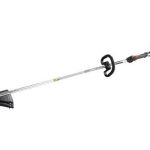One of the more frustrating aspects of maintaining a lawn is that you can develop holes in your lawn through no fault of your own. These holes often involve torn up grass and piles of soil—not only is this unattractive, but it undoes all of the hard work that you’ve put into your lawn. Compounding the issue is that it can be very difficult to actually determine what is creating the holes. Holes can occur any time of year and are caused by a number of different sources, so in this post we offer a basic overview of different animals (and other sources) that create holes and the types of holes that are produced.
Common animals that make holes
First of all, you can tell when an animal has created your hole if you notice a pile of loose dirt. If the hole is long and about the width of a pencil, this gives you a pretty good idea that a bird is the culprit. Meanwhile, if the hole is about ½ of an inch wide and was created after a period of rain, this is an easy sign that an earthworm likely caused it. Larger holes are generally caused by mammals. A hole that is about 2 inches, with a small ground and grass that is torn, then a chipmunk or rodent (rats are especially common) probably caused it. Moving into larger holes,, if you notice holes of 6-10 inches, you know that you have a larger animal on your hands. Both skunks and raccoon are not afraid to dig sizeable holes and they do not typically leave a mound. Because raccoon and skunks are most active at night, it is very difficult to actually catch them in the act, but try and keep an eye out for them after sunset. The reasons why these animals dig holes vary substantially; in some cases, they want to store food for winter, or they may want to search for ground insects or locate food that has already been stored.
Other causes for holes
If you notice a hole, this does not necessarily mean that an animal is to blame. In particular, when a decomposing root is exposed to heavy rain, it dissolves and turns into a hole. This process is also exacerbated if you have termites, which can swiftly cause a stump to decompose.
Whichever your cause, make sure to fill your hole with topsoil. Pay attention to time of year, location, and size of the hole when determining the cause for your unsightly lawn predicament.







